London calls to travellers in countless ways – through its iconic landmarks, rich history, vibrant culture and endless possibilities for discovery. From the majestic Tower Bridge to the bustling Borough Market, every corner of this metropolis tells a unique story.
While the city welcomes visitors year-round, choosing when to visit can significantly shape your London experience. A summer morning might find you basking in sunshine at an outdoor café in Covent Garden, while a winter afternoon could see you seeking shelter from rain in the British Museum. The timing of your visit affects not just weather conditions, but also transforms the entire character of the city. Summer brings extended daylight hours until 9.30 pm, perfect for evening walks along the Thames, while winter days end around 4 pm, lending themselves to cosy pub visits and theatre shows.
Beyond just seasonal differences, timing your daily activities around London’s weather patterns can enhance your experience considerably – morning fog often gives way to clearer afternoons, making later visits to viewing platforms like The Shard more rewarding. The city’s countless indoor attractions mean there’s always somewhere fascinating to explore, regardless of the weather, but timing your visit thoughtfully can help you make the most of London’s outdoor spaces and seasonal events.
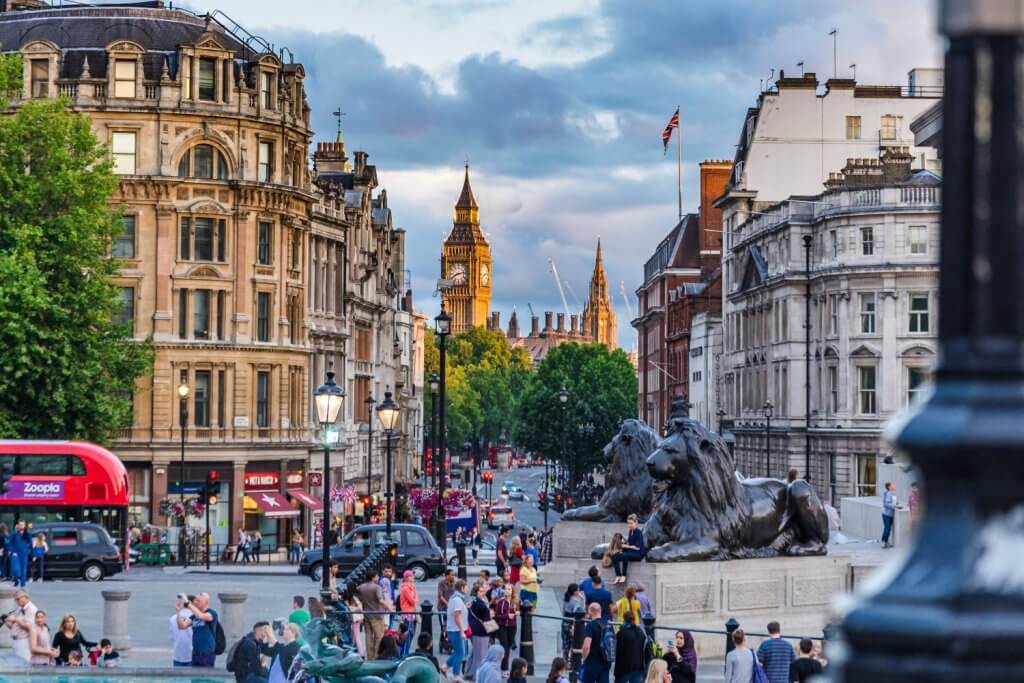
Like an untamed spirit, London’s climate keeps everyone guessing, with sunshine and showers often playing hide and seek throughout the day. Temperatures generally hover between a mild 9°C and a pleasant 18°C (48°F to 64°F), making most activities comfortable year-round. The city experiences mild winters and moderate summers, with rainfall possible in any season. With around 585 mm (23 inches) of rain annually, it’s wise to carry an umbrella, as showers can occur unexpectedly. When packing, layers are essential; a light waterproof jacket is advisable year-round, while warmer clothing is recommended for spring and autumn visits.
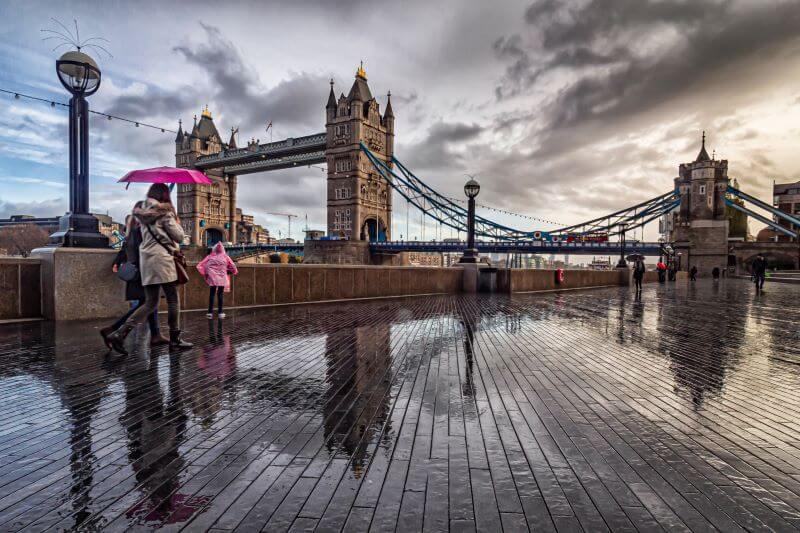
The ideal time to explore London varies depending on your interests and priorities. Spring and autumn emerge as the most balanced seasons, offering mild temperatures and manageable crowd levels. Summer brings vibrant outdoor events but peak season prices, while winter offers festive charm despite shorter days. London’s attractions offer different charms throughout the year, and timing your visits can significantly enhance your experience. Here’s a seasonal guide to the city’s must-see sights.
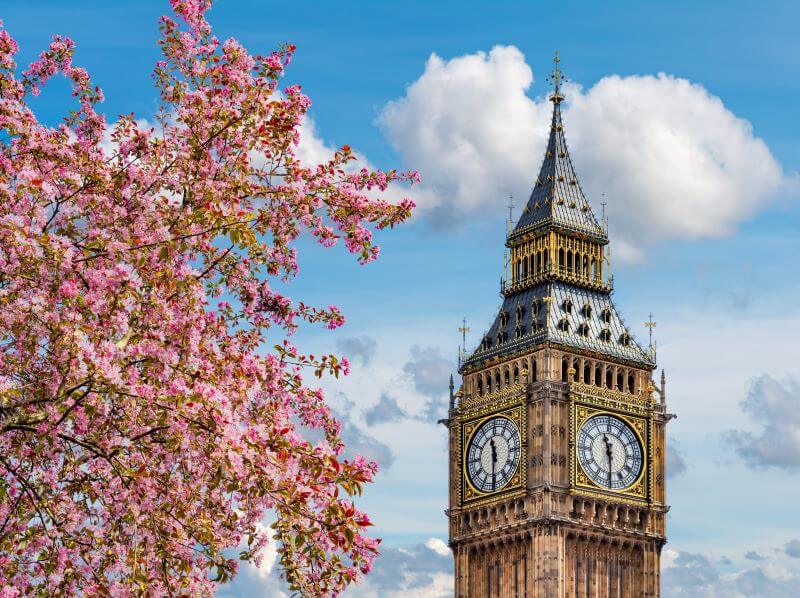
Spring breathes new life into London’s royal parks and gardens, making it perfect for outdoor exploration. As daffodils carpet Green Park and cherry blossoms paint Greenwich Park pink, the city awakens with renewed energy. The Chelsea Flower Show in May transforms the Royal Hospital Chelsea into a horticultural paradise, while Easter brings egg hunts to Hampton Court Palace. Kew Gardens bursts into spectacular bloom, offering visitors a rainbow of tulips, magnolias, and bluebells.
This season is ideal for walking tours through historic neighbourhoods like Hampstead or along the Columbia Road Flower Market on Sundays. The mild temperatures make it comfortable to explore outdoor markets like Portobello Road or Borough Market.
Spring visitors enjoy shorter queues at attractions and reasonable hotel rates, though it’s advisable to pack layers for those unexpected April showers. Unpredictable weather aside, spring is an excellent time to explore the city’s magnificent parks – St. James’s Park for wildlife watching, Regent’s Park for the Secret Gardens, or Richmond Park for deer spotting.
The London Eye is particularly magnificent in spring, when clear days offer stunning views across blooming parks and gardens. Book morning slots to avoid afternoon clouds and school groups.
Kensington Palace and its gardens are at their most photogenic, with flowers in full bloom and perfect temperatures for exploring the palace grounds. The Tower of London is best visited in late spring, when queues are manageable, and you can enjoy both indoor exhibits and outdoor areas comfortably.
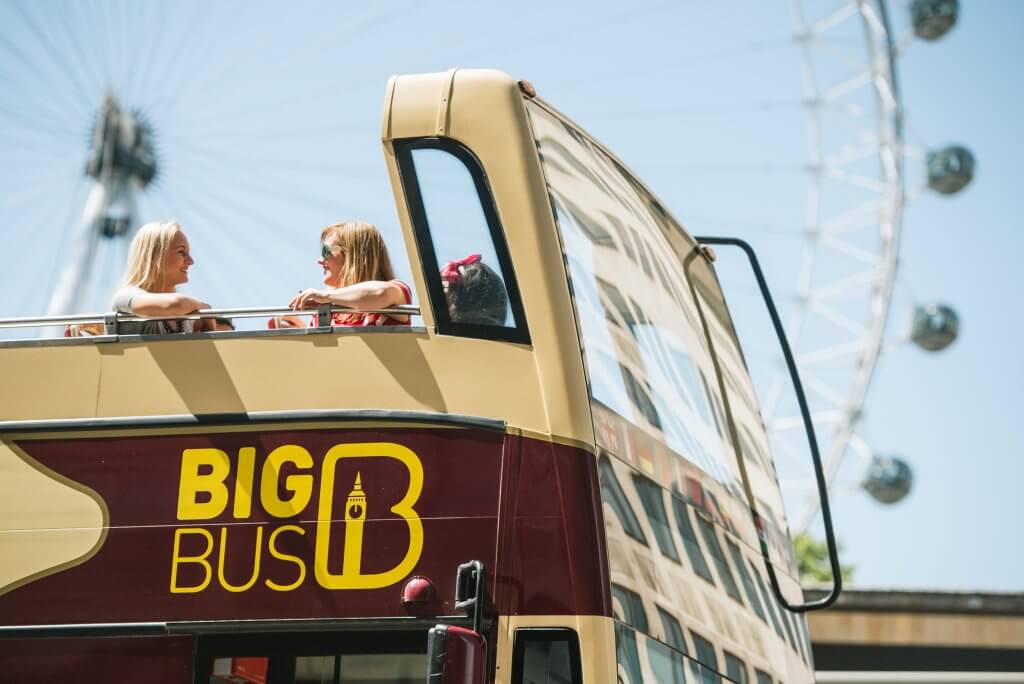
Summer sees London in full swing, with long, light-filled evenings perfect for riverside strolls along the South Bank and rooftop bars with spectacular city views. Summer will potentially bring the best weather to visit London, especially if you plan to be outdoors a lot.
Wimbledon serves up world-class tennis in June, while the Notting Hill Carnival fills August Bank Holiday weekend with Caribbean rhythms and colours. The season brings outdoor cinema screenings at locations like Somerset House and Regent’s Park Open Air Theatre.
Take advantage of the warm weather with a paddleboat ride in Hyde Park’s Serpentine, or join locals for outdoor swimming at Hampstead Heath’s ponds. Food festivals and street markets come alive, from Street Feast at various locations to the South Bank’s food markets.
Summer evenings are perfect for Shakespeare’s Globe performances or sunset picnics in Primrose Hill with views over the city skyline. While summer brings delightful weather for beer gardens and outdoor dining, it also attracts the largest crowds and highest prices.
The BBC Proms at Royal Albert Hall offer world-class classical music, while Hampton Court Palace Festival combines history with outdoor concerts.
Thames River cruises are most delightful during summer evenings, when the extended daylight offers perfect conditions for sunset views and photography. Book the last daytime cruise to catch the golden hour.
The Tower Bridge Experience, including the glass floor walkway, benefits from summer’s clear skies and longer days – aim for late afternoon visits when tourist crowds begin to thin. Walking tours, whether following the Harry Potter trail or exploring historic neighbourhoods, are most comfortable in the mornings before the heat builds up.
The interior of the Buckingham Palace is only open to the public during summer, usually from late July until the end of September, with tours running daily from morning until evening. The best time to visit Buckingham Palace is in the late morning, when the legendary Changing of the Guard ceremony takes place.
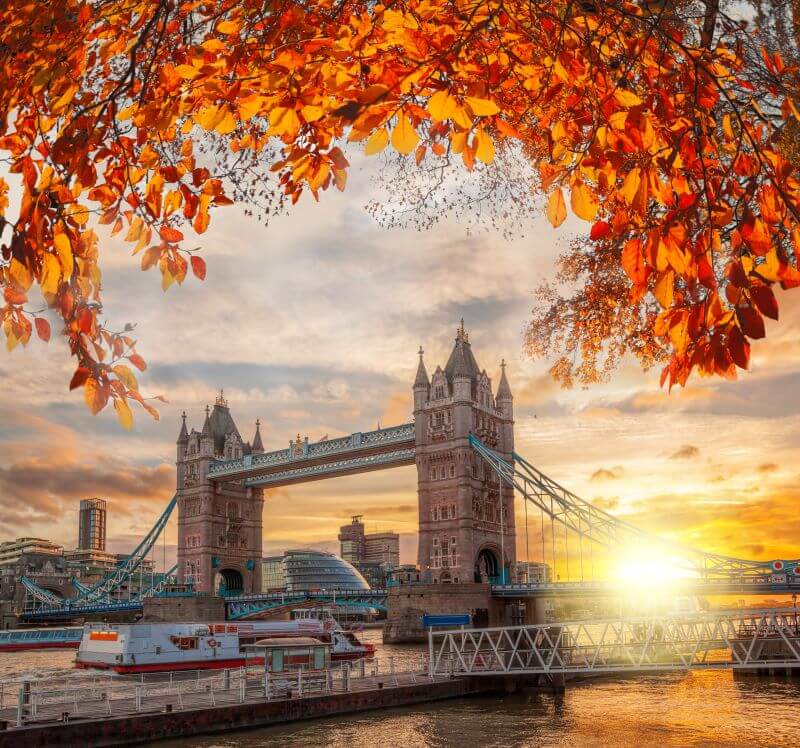
Autumn paints London in warm amber hues, making it particularly photogenic for visitors. Fashion Week struts through September, bringing a buzz to the city’s shopping districts from Oxford Street to Carnaby Street.
Halloween illuminates the Tower of London with spooky tours and ghostly tales, while Kensington’s museums offer lighter crowds for exploring their vast collections. This season is perfect for cosy pub crawls in historic areas like Smithfield or Clerkenwell, or enjoying afternoon tea at classic venues like The Ritz or Fortnum & Mason.
The cooling temperatures and thinning crowds make it ideal for exploring the city’s countless museums – from the Victoria and Albert to the Natural History Museum. Enjoy the autumn colours with walks through Hampstead Heath or along the Regent’s Canal.
October half-term brings family-friendly events across the city, while November’s Lord Mayor’s Show continues a centuries-old tradition. Don’t miss the golden hours in royal parks like Greenwich or the peaceful gardens of St. Paul’s Cathedral.
Warner Bros. Studio Tour – The Making of Harry Potter is ideal for autumn visits, when shorter queues and comfortable indoor temperatures enhance the experience. Plus, the studios often feature seasonal displays like “Dark Arts” around Halloween.
Windsor Castle’s State Apartments and Queen Mary’s Dolls’ House are perfect autumn destinations, offering shelter from occasional rain while the castle grounds still maintain their beauty. St. Paul’s Cathedral’s climb to the dome is more comfortable in cooler temperatures, and morning fog often clears to reveal spectacular city views.
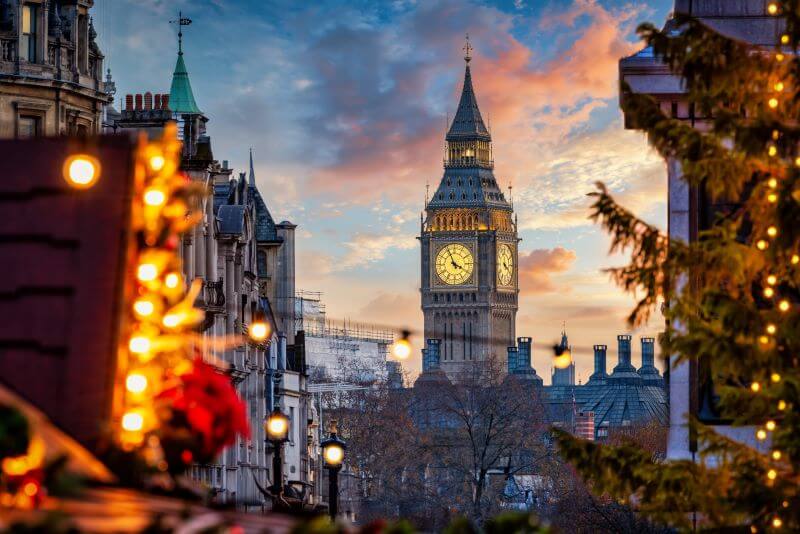
Winter transforms London into a festive wonderland with activities that bring warmth to the coldest days. Twinkling lights adorn Oxford Street and Carnaby Street, while the aroma of mulled wine wafts from Christmas markets at Southbank Centre and London Bridge City. Ice rinks pop up at iconic locations like Somerset House, the Natural History Museum, and the Tower of London, offering magical skating experiences.
While December days are short and chilly (with an average temperature of 5°C to 9°C/41°F to 48°F), the city’s cosy pubs and world-class theatres offer warm refuges. Winter Wonderland turns Hyde Park into a magical carnival, complete with rides, ice sculptures, and traditional German Christmas markets. This season is perfect for museum exploration – the British Museum and National Gallery are less crowded, and their cafés offer warm sanctuaries.
Evening activities shine with special illumination events like Kew Gardens’ Christmas lights trail and Canary Wharf’s Winter Lights festival. Enjoy afternoon tea at The Shard with panoramic views of the city’s winter landscape, or warm up with hot chocolate at historic cafés like Caffe Concerto.
The post-Christmas sales in January make it an excellent time for shopping enthusiasts, while February brings romantic Valentine’s specials at restaurants and viewpoints across the city.
The Tower of London takes on a special atmosphere in winter, with fewer crowds and a mysterious ambiance – plus, the Crown Jewels display offers a warm refuge.
Westminster Abbey is particularly magical during winter afternoons when sunlight streams through the stained glass, and carol services add festive charm. The London Dungeon and other indoor attractions provide excellent wet-weather alternatives.
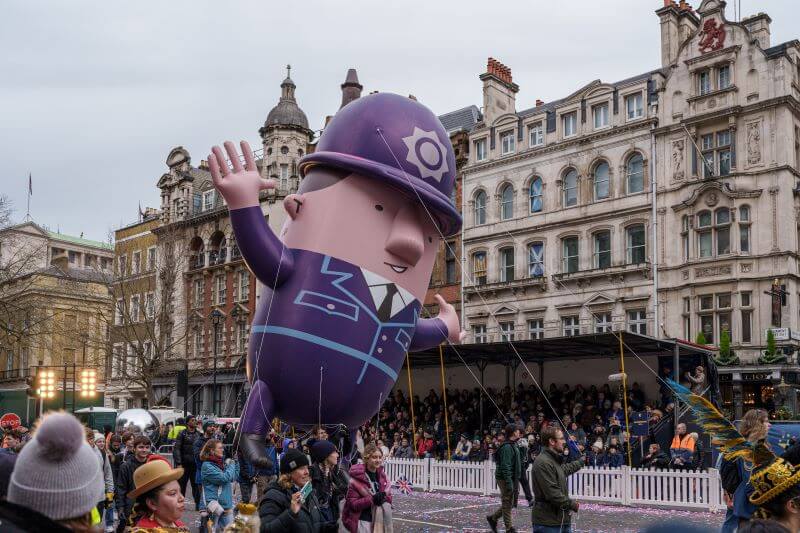
Events and festivals in London create a vibrant tapestry of experiences throughout the year. Each month brings its own unique celebrations, inviting locals and visitors alike to partake in the city’s rich culture.
January kicks off with the New Year’s Day Parade, where floats and performers fill the streets, setting a festive tone for the year ahead. As winter continues, the International Mime Festival showcases a variety of performances across the city, perfect for families looking for something different.
In March, St Patrick’s Day transforms London into a sea of green, with lively parades and cultural events celebrating Irish heritage. The arrival of spring in April is marked by the London Landmarks Half Marathon, drawing runners and spectators to cheer on participants as they run past iconic landmarks.
After being held in autumn due the Covid pandemic, the London Marathon is back on its original schedule and will take place in April. This is a major running event with possibilities to participate for everyone.
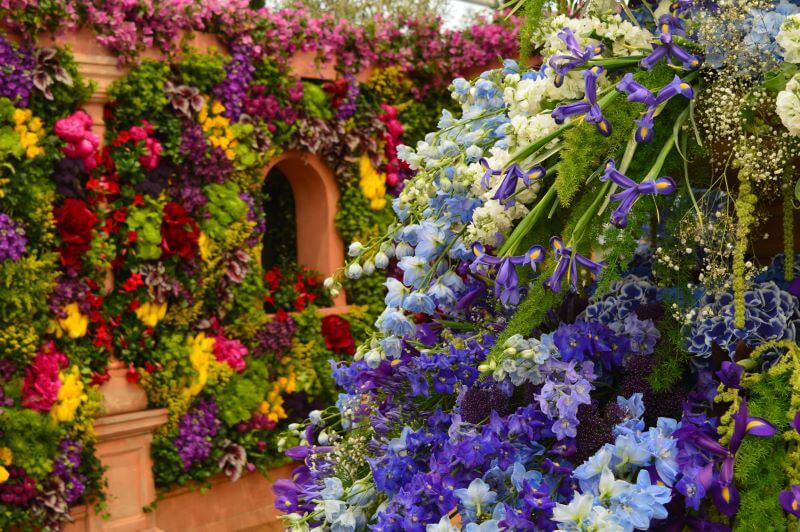
May brings the Chelsea Flower Show, a horticultural highlight that attracts garden enthusiasts from around the world. This month also features the London Gallery Weekend, where art lovers can explore new galleries and enjoy free activities.
As summer approaches, June is bustling with events like Trooping the Colour, celebrating the British Sovereign’s official birthday with a grand parade. The London Tech Week also takes place, spotlighting innovation and technology through various exhibitions and talks. This event brings more than 40,000 participants from the global tech industries into the city.
The excitement continues in July with Wimbledon, where tennis fans can witness thrilling matches at one of the sport’s most prestigious tournaments. For music lovers, the BBC Proms begins in mid-July, offering a series of (classical) concerts that resonate throughout the Royal Albert Hall. From classical and choral music to disco tunes, there’s something for everyone here. Look out for the current programme with events from July to September.
As autumn sets in, September features Open House London, allowing visitors to explore some of the city’s most iconic buildings for free. The programme offers themed walking tours, the possibility to explore new places, and family friendly activities. This month also hosts the London Design Festival, showcasing cutting-edge creativity across multiple venues.
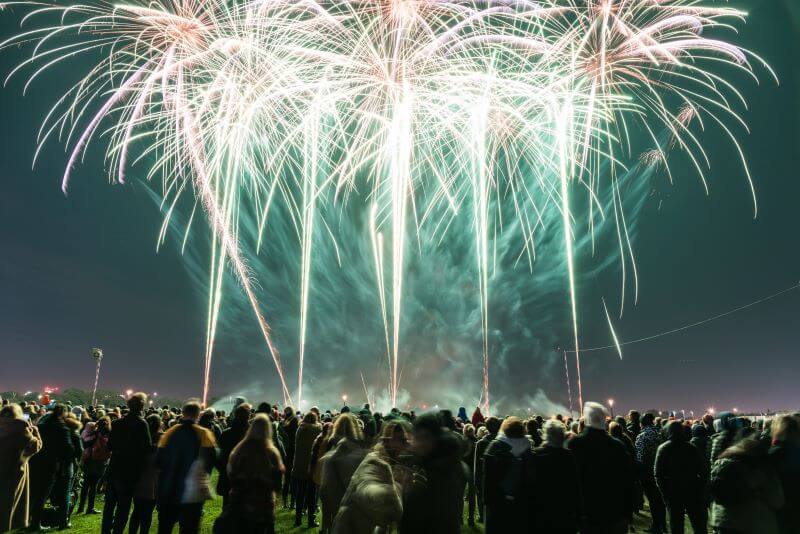
October is a time for reflection with Diwali celebrations lighting up Trafalgar Square, while the BFI London Film Festival offers film enthusiasts a chance to see new releases and engage with filmmakers.
In November, Bonfire Night commemorates Guy Fawkes with fireworks displays across the city, while the Lord Mayor’s Show highlights London’s rich history through a colourful procession a few days later. This civic procession dates back to the 13th century and has developed into a noisy, colourful and joyous spectacle.
Finally, as December rolls in, festive cheer fills the air with events like Winter Wonderland in Hyde Park, featuring ice skating and Christmas markets. The month culminates with spectacular New Year’s Eve fireworks along the Thames, ushering in another year of adventures in this remarkable city.
Whether you’re drawn by music, sports, or cultural celebrations, London’s events calendar ensures there’s always something happening. Embrace these opportunities to experience the city from different angles and create lasting memories during your visit.
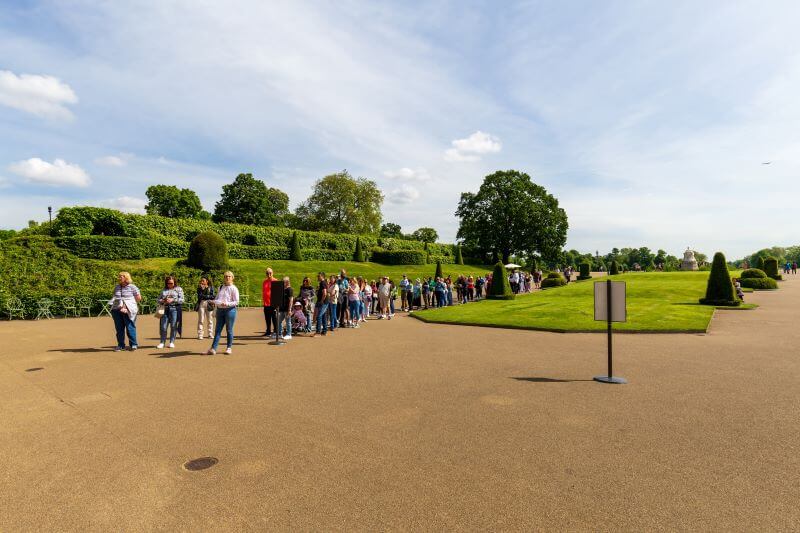
Summer holidays (mid-June through August) and the festive period (mid-December through early January) see the highest visitor numbers, transforming London’s pace and atmosphere. During these peaks, expect longer queues at attractions – waiting times at popular sites like the London Eye can exceed two hours during midday.
Accommodation prices can surge by 50-100%, particularly during events like Wimbledon or New Year’s Eve. Advance bookings become essential for popular restaurants and shows, with many West End productions selling out weeks ahead. School holidays, especially in July and August, bring increased family visitors to attractions like the Natural History Museum and London Zoo.
The Christmas season sees a particular surge in shopping districts like Oxford Street and Covent Garden, with weekends being exceptionally busy.
Major events like the Notting Hill Carnival (August Bank Holiday) or Winter Wonderland (December) create localized congestion in specific areas. To navigate peak seasons successfully, consider early morning or evening visits to popular attractions, book restaurant reservations 2-3 months in advance for high-end establishments, and purchase theatre tickets as soon as they become available. Because when you already have your tickets and bookings, those queues at the counter will not bother you.
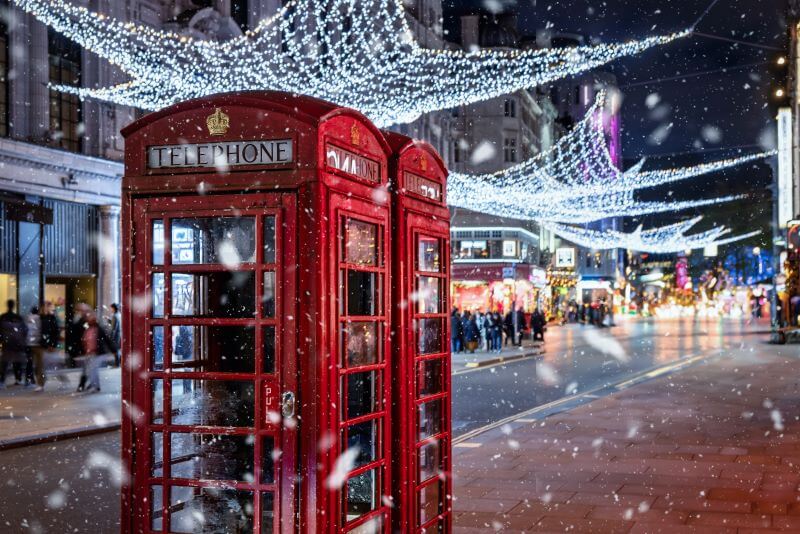
January to February and October to November offer better value and fewer crowds, presenting an ideal time for budget-conscious travellers and those seeking a more authentic London experience. Hotel rates can be 30-40% lower than peak season, with many establishments offering special winter packages or extended-stay discounts.
January brings the excitement of post-Christmas sales while maintaining the winter ambiance without December’s crowds. February, though cold, offers unique opportunities like Valentine’s Day specials and quieter museum experiences.
October and November provide pleasant autumn conditions with reasonable rainfall, perfect for exploring indoor attractions and cozy pubs. During these months, you’ll find it easier to secure last-minute reservations at popular restaurants, and theatre tickets are more readily available, often at discount prices. Walking tours operate with smaller groups, allowing more interaction with guides. Many attractions extend their opening hours or offer special exhibitions to attract visitors during these quieter months.
Business travellers dominate during weekdays, leaving weekends surprisingly peaceful for sightseeing. This period also offers better opportunities to interact with locals and experience London’s authentic neighbourhood life, as tourist areas are less overwhelmed with visitors.
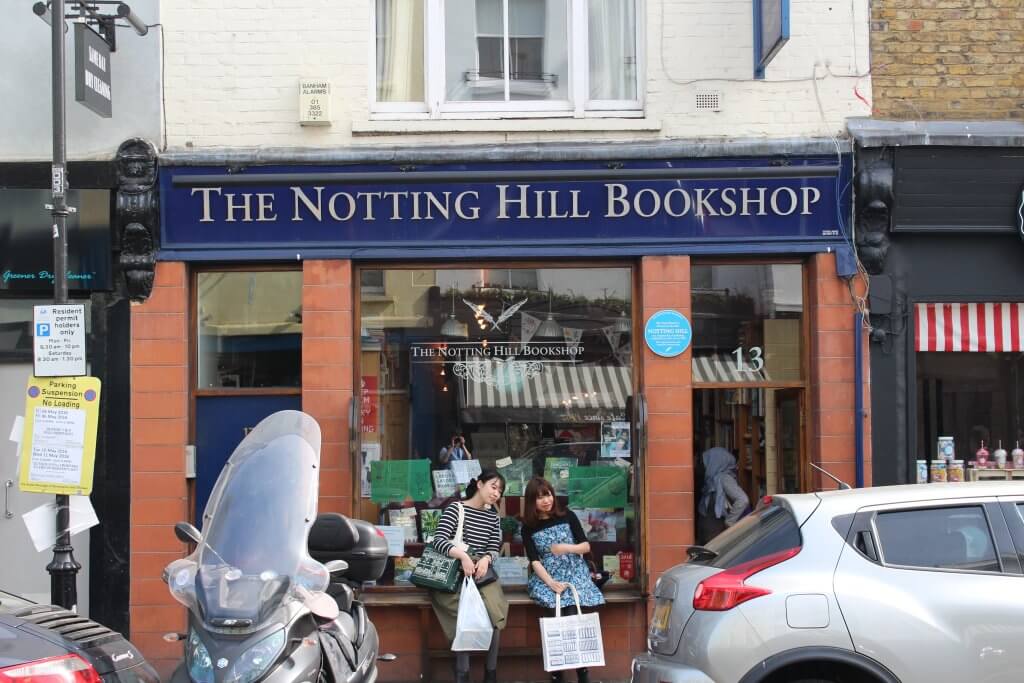
It almost goes without saying, but if there is one thing you should bear in mind: Book well in advance for peak seasons, particularly for stays during summer months or the Christmas period when rooms can be booked up to six months ahead. Try to find a balance between a place that meets your needs but also offers good access to the attractions you would like to visit.
Each area offers distinct advantages: Greenwich provides a peaceful retreat with royal parks and museums as well as excellent transport links, South Bank puts you within walking distance of major attractions but also offers a vibrant cultural scene and nice riverside locations, while areas like Hackney or Islington offer authentic London experiences with excellent dining options. Shoreditch is great for its trendy atmosphere and better value accommodations.
For summer visits, maybe search for accommodations with air conditioning, as many historic hotels may lack this facility. During winter, consider hotels near underground stations to minimize walking in inclement weather.
Family travellers might find aparthotels in residential areas like Hampstead or Richmond more suitable, offering kitchen facilities and proximity to parks. For business travellers, areas like Canary Wharf or Liverpool Street provide excellent transport connections while often offering better weekend rates.
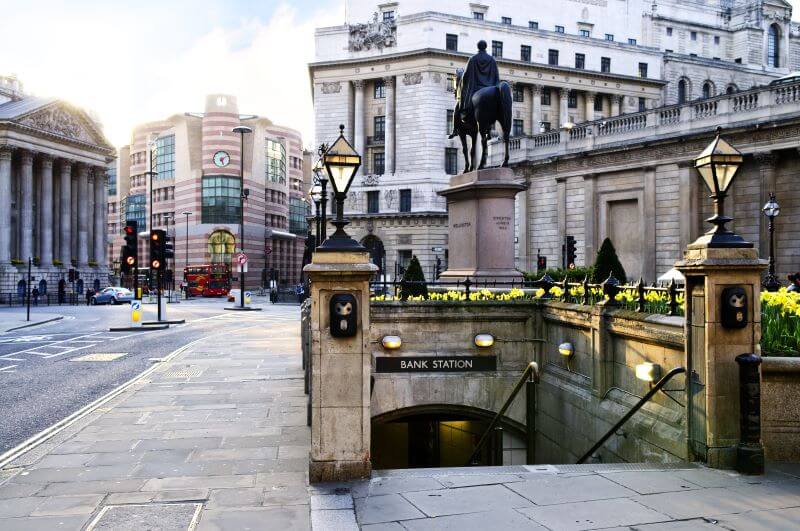
London’s extensive public transport network operates year-round, with the Underground, buses, and rail services providing comprehensive coverage. Consider purchasing a Visitor Oyster Card or Travelcard for cost-effective travel – a weekly Travelcard can offer significant savings for stays of 5 days or more.
The Underground runs until around midnight (later on weekends), with night buses and the Night Tube on selected lines filling the gap during early hours, connecting central London to the outskirts.
Remember that service schedules may vary during holidays, with reduced services on Christmas Day and engineering works common during bank holidays. Summer tourists should note that some Underground lines lack air conditioning – the newer Elizabeth line and London Overground offer more comfortable alternatives.
During peak hours (roughly 8-9.30 am and 4.30-6.30 pm), consider alternative routes or walking between nearby stations. Apps like Citymapper prove invaluable for real-time updates and route planning.
River buses offer scenic alternatives along the Thames, particularly enjoyable during spring and summer months.

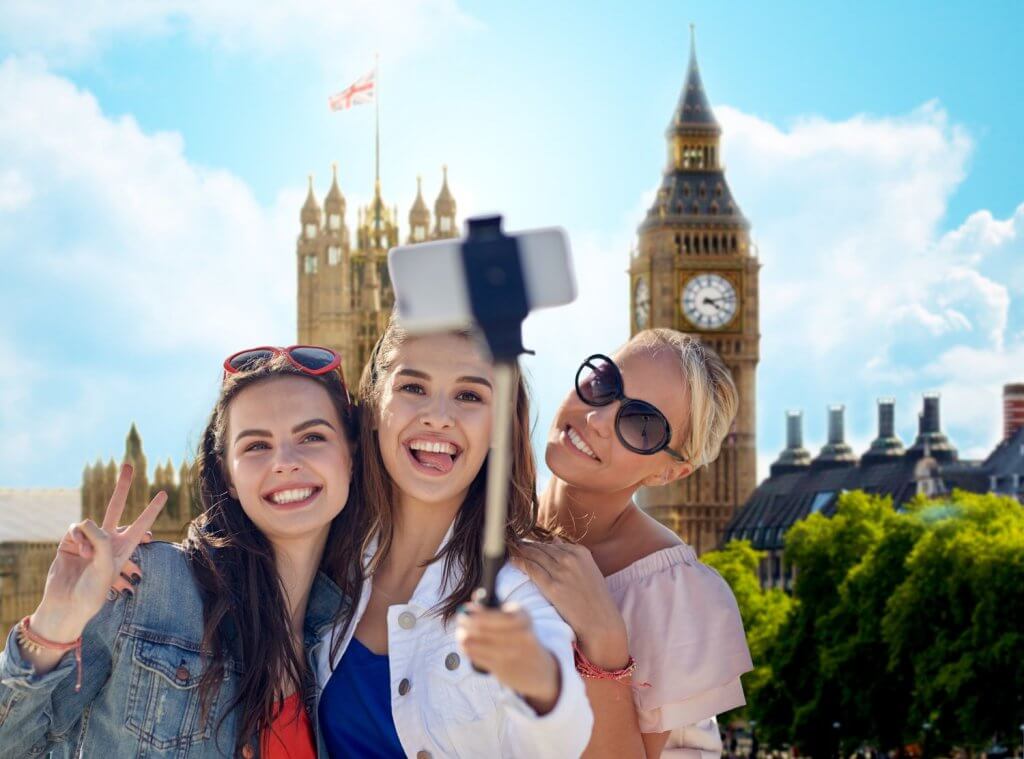
For maximum value and experience, consider purchasing a London City Pass, so you can visit more attractions without queueing using the skip-the-line tickets of the Pass. This multi-attraction pass provides flexibility to adapt plans according to weather conditions without worrying about entrance fees or queues. Save yourself some time and money by booking your tickets in advance. Remember that indoor attractions like the Madame Tussaud’s or the British Museum can serve as excellent backup plans during inclement weather, while outdoor venues like the London Zoo are best saved for clear days.
Your entertainment ticket for a fun and action-packed trip to London.
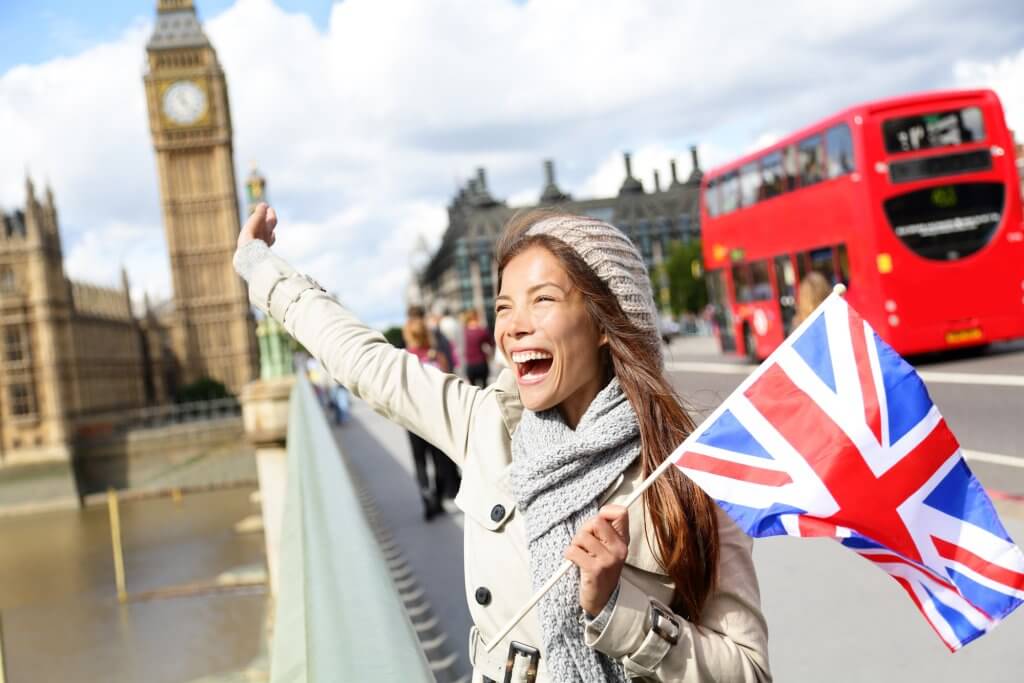
There is no clear answer to the question ‘When is the best time to visit London?’. The best time to visit London ultimately depends on what you seek from your journey. While spring and autumn offer ideal conditions for most travellers, with comfortable temperatures and moderate crowd levels, each season presents its own unique way to experience this remarkable city.
Summer brings vibrant street life and outdoor festivals but requires advance planning for accommodations and popular attractions. Winter offers festive charm and potential savings, though shorter days need to be factored into itineraries.
Whatever time you choose, London’s timeless appeal ensures an unforgettable adventure, from its historic landmarks and cultural institutions to its dynamic food scene and vibrant neighbourhoods. The key to a successful visit lies in embracing the city’s character in any season, planning ahead for your must-see attractions, and maintaining flexibility to adapt to London’s famously changeable weather.
Consider your priorities – whether it’s attending specific events, maximizing daylight hours for sightseeing, or finding the best value for money. London’s diverse indoor and outdoor attractions mean there’s never truly a bad time to visit, just different ways to experience the city’s many faces.